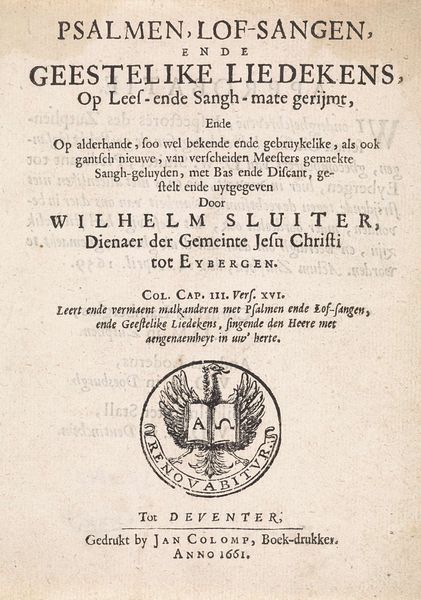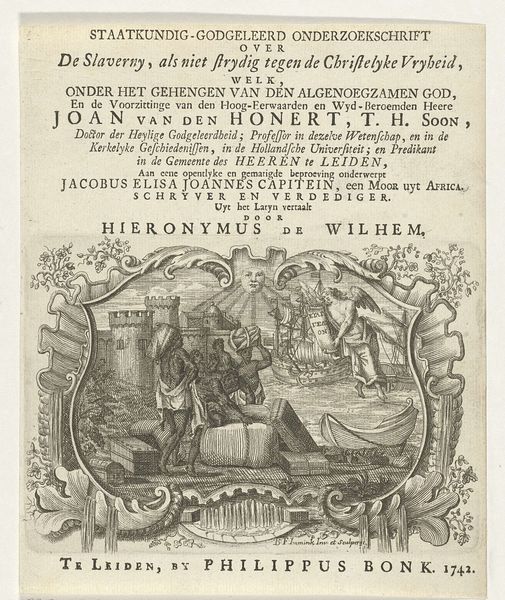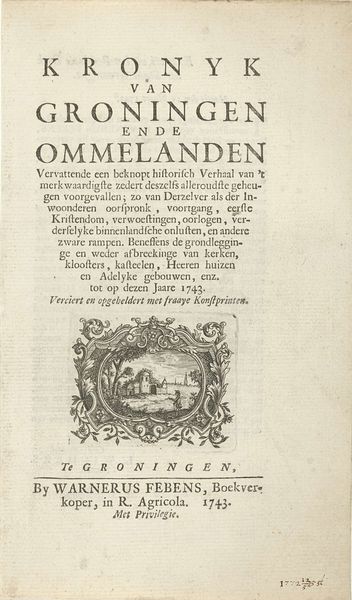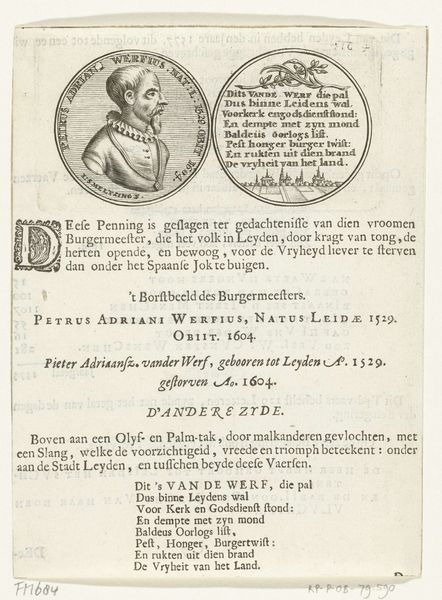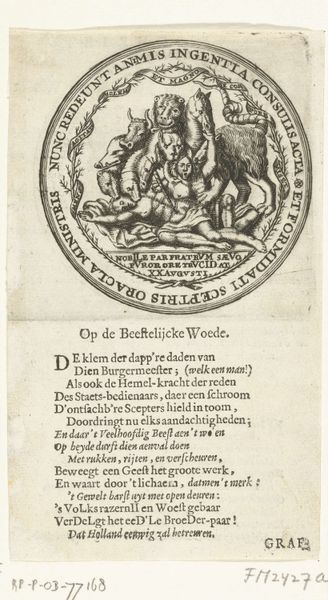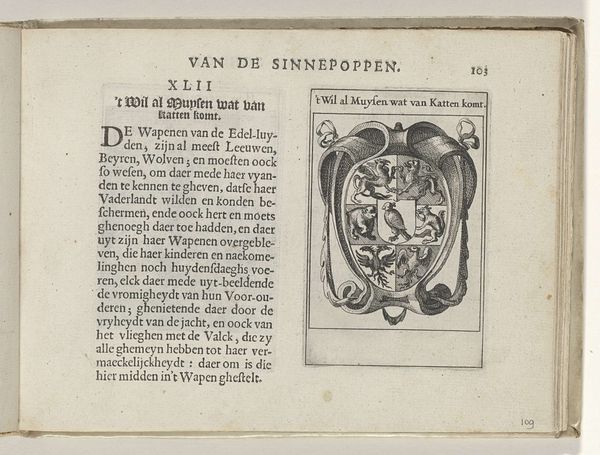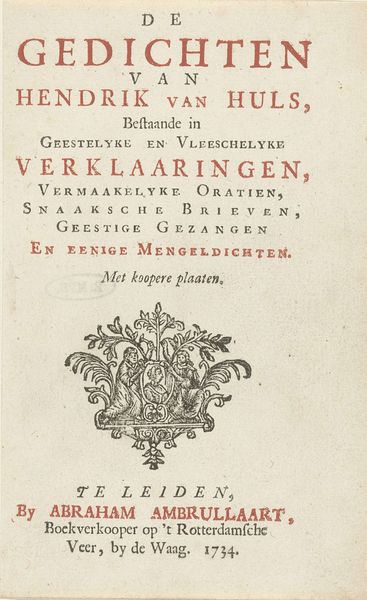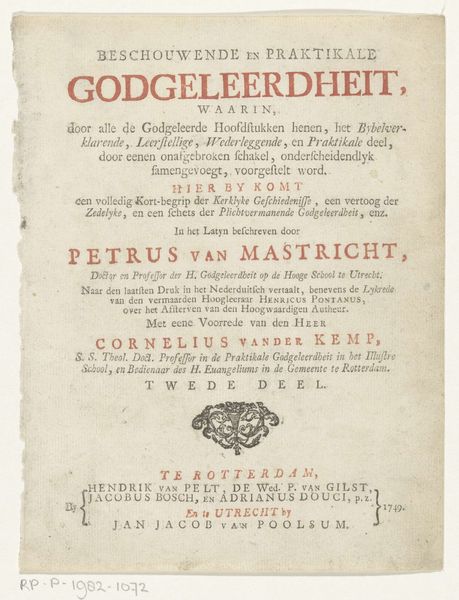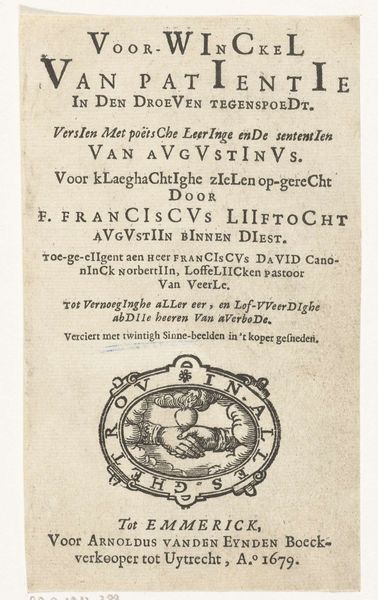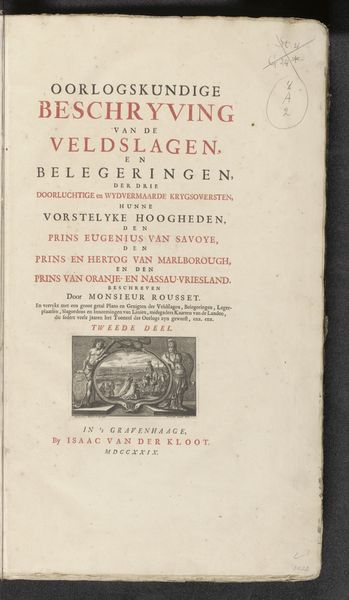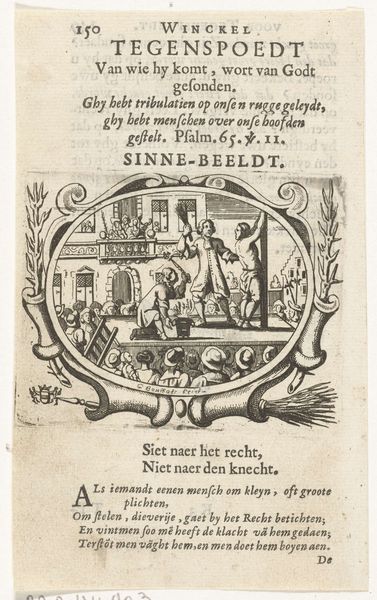
print, engraving
#
hand-lettering
#
narrative-art
#
baroque
#
dutch-golden-age
# print
#
old engraving style
#
hand drawn type
#
hand lettering
#
figuration
#
personal sketchbook
#
hand-drawn typeface
#
pen-ink sketch
#
pen work
#
sketchbook drawing
#
history-painting
#
sketchbook art
#
engraving
#
calligraphy
Dimensions: height 152 mm, width 78 mm
Copyright: Rijks Museum: Open Domain
Curator: This engraving, currently residing in the Rijksmuseum, is titled "Elia gevoed door de raven," dating back to 1669. It is from an anonymous author of that period. Editor: My initial impression is one of stark isolation. The lone figure under that gnarled tree, rendered in such sharp lines, it evokes a sense of almost biblical desolation, even before knowing the title. Curator: Precisely! The artwork depicts the biblical prophet Elijah being fed by ravens during a famine. Let's delve into the socio-political climate of the Dutch Golden Age and the role of religious iconography during this period. The choice of this specific narrative, especially during a time of political and social upheaval, suggests a yearning for divine intervention and a reliance on faith during uncertain times. The image carries echoes of resilience amidst power structures of class. Editor: And I immediately read the ravens themselves as powerful symbols. Throughout history, ravens have held dualistic meanings – omens of ill fortune and harbingers of death, yet also messengers of the divine, providers in times of need. Their presence here feels purposeful, laden with symbolic weight. It invites contemplation on faith and unexpected providence. This print, given its small scale, would likely have served as a kind of personal, portable devotional image. Curator: Considering the history of printmaking and its accessibility during the era, this artwork was indeed likely consumed within wider social circles. Also, how the very composition of the piece itself reflects power structures – Elijah situated below the flying birds and at the foot of the textual title above. What would that say about society, the social positions, and maybe even religion during that period? Editor: Looking at it through an iconographic lens, the compositional arrangement reinforces that hierarchy. The text above Elijah’s figure speaks to earthly authority. Yet Elijah, supported by the divine act of ravens bringing sustenance, exists beyond earthly constraints and answers to higher laws. This dualistic interpretation resonates through the symbols chosen. Curator: What a fantastic insight into the complex intersections between the artwork's themes, symbols, and historical relevance! It challenges me to question what exactly is the role of common person's interpretation with the context and purpose of this artistic rendering. Editor: For me, considering both symbolic language and emotional impact heightens the artwork's enduring legacy – offering a way to see and be seen throughout the times.
Comments
No comments
Be the first to comment and join the conversation on the ultimate creative platform.
